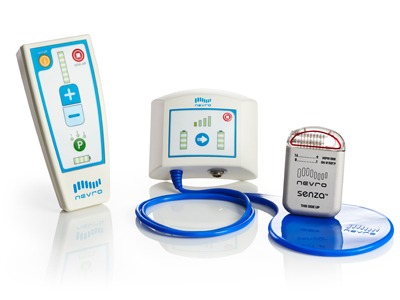
Robert Levy, director of the Marcus Neuroscience Institute (MNI) at Boca Raton Regional Hospital, USA, is the first physician in the state of Florida to use the Senza spinal cord stimulation (SCS) system as a method to treat patients with chronic back and leg pain. The Senza SCS system, developed by Nevro, is a spinal cord stimulator that has demonstrated superior results as compared to standard stimulation systems, with patients achieving approximately a 50% greater improvement in pain score than those with traditional SCS therapy.
Chronic pain can significantly interfere with a person’s quality of life and functionality. There are a variety of treatment options for chronic pain that range from medications to surgical interventions.
SCS offers a treatment option for chronic back and leg pain that uses electrical pulses to alter the transmission of abnormal pain signals to the brain. The Senza system is the only SCS that provides high-frequency, short-duration electrical pulses to the spinal cord at a rate of up to 10,000 per second to effectively block pain. Conventional, low-frequency stimulation typically provides between 40 and 60 electrical pulses per second and is intended to mask the pain through paraesthesias— tingling sensations that overlap the pain distribution. Low-frequency SCS replaces or lessens one acute sensation with another less debilitating one. Senza’s high-frequency, short burst electricity attacks the pain signal at its source.
“It is rare to come across a medical technology that produces such excellent clinical results versus comparative therapies and I am excited to incorporate this into our capabilities at MNI,” said Levy. “The results of a randomised controlled study done by Senza have shown that this technology is superior versus traditional SCS for back and leg pain and is a spinal cord stimulation system that will provide our patients with distinct advantages and more desirable outcomes.”
The key components of the system are leads, an implantable pulse generator (IPG), patient remote control and a portable charging system. The IPG is surgically placed under the skin, usually in the buttock or the abdomen, and is similar in function and appearance to a pacemaker. It is attached to leads—thin wires placed in the spinal epidural space that deliver precise pulses from the IPG to the spinal cord. The remote control device allows the patient to turn the system on and off and adjust stimulation within parameters set by physicians. The charging system is used by the patient to recharge the IPG battery after it is implanted.
Nevro’s Senza system was approved by the Food and Drug Administration in May and included superiority labelling, indicating that the technology was found to be statistically superior to traditional SCS therapy in terms of response rate and magnitude of pain relief for patients with back and leg pain. Because it is paraesthesia-free, the system is also the only SCS therapy approved by the FDA to be used without patient restrictions on motor vehicle operation while receiving therapy.













